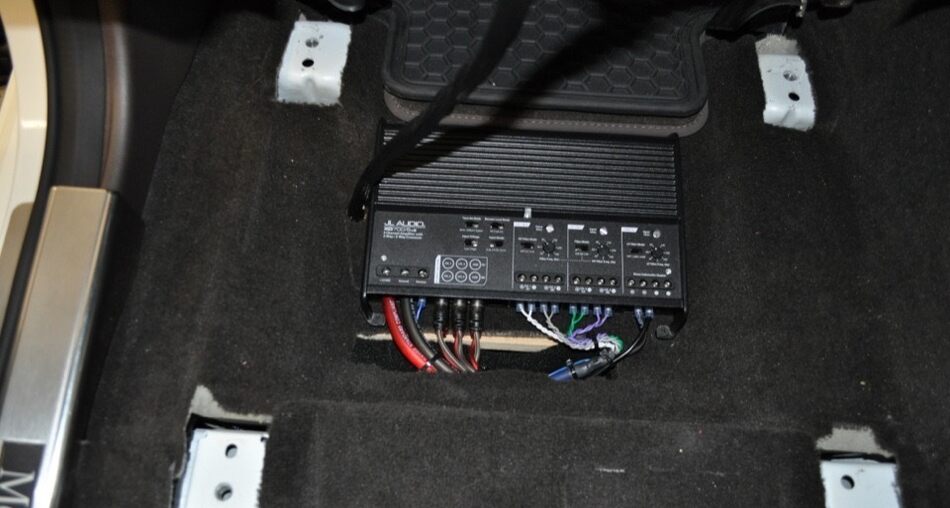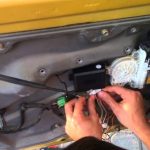In the realm of car audio, there’s an unwavering desire to make our daily commutes and road trips more enjoyable. While factory stereo systems have come a long way, they often leave us craving more bass and overall audio quality. This is where adding a subwoofer to a factory stereo system can truly transform your car’s audio experience. In this guide, we’ll explore the benefits, steps, and considerations involved in this audio enhancement journey.
Understanding Factory Stereo Systems
Factory stereo systems, also known as OEM (Original Equipment Manufacturer) audio, are the default sound systems that come pre-installed in most vehicles. While these systems are designed for general use, they often lack the power and finesse needed to deliver exceptional audio quality. One of the most common shortcomings of factory stereos is their inability to reproduce deep bass frequencies, which is where subwoofers come into play.
Benefits of Adding a Subwoofer
Improved Bass Quality and Depth: Subwoofers are specifically engineered to reproduce low-frequency sounds, providing rich, deep bass that factory stereos struggle to deliver. The addition of a subwoofer enhances the overall audio quality, making your favorite music come to life.
Enhanced Overall Audio Experience: A well-integrated subwoofer doesn’t just amplify bass; it can also improve the clarity and accuracy of mid and high frequencies. This results in a more balanced and immersive audio experience.
Customization of Audio Preferences: Adding a subwoofer allows you to fine-tune your car’s audio to match your personal preferences. Whether you’re a fan of heart-pounding bass or a more subtle, balanced sound, a subwoofer provides the flexibility to adjust your system to your liking.
Types of Subwoofers
Before diving into the installation process, it’s essential to understand the types of subwoofers available:
Powered vs. Passive Subwoofers: Powered subwoofers have built-in amplifiers, simplifying the installation process. Passive subwoofers depend on an external amplifier for power.
Enclosure Options: Subwoofers can be housed in different types of enclosures, including sealed, ported, and bandpass. The choice of enclosure affects the subwoofer’s performance and the type of bass it produces.
Matching Subwoofer Specifications: It’s crucial to select a subwoofer that complements your factory stereo. Pay attention to specifications like power handling, impedance, and sensitivity to ensure compatibility.
Pre-Installation Preparation
Before you jump into the installation, gather the necessary tools and materials. Additionally, familiarize yourself with your car’s electrical system and safety precautions. Working with car audio may involve handling electrical components, so safety should be a top priority.
Steps for Adding a Subwoofer
1. Locating a Suitable Installation Spot
Begin by finding the right spot in your vehicle for the subwoofer. This location should be secure, free from obstacles, and preferably close to the rear of your vehicle. Common spots include the trunk or rear cargo area, but some vehicles also have designated subwoofer enclosures or compartments. Make sure your choice of location doesn’t interfere with your vehicle’s operation and doesn’t compromise safety.
2. Wiring and Connecting the Subwoofer
To connect your subwoofer, you’ll need to run wires from your subwoofer to the amplifier and power source. Most powered subwoofers come with all the necessary wires, while passive subwoofers require separate amplifier wiring. It’s crucial to follow the manufacturer’s instructions for wiring, as the specifics can vary between subwoofer models.
a. Power Wiring: For powered subwoofers, you’ll connect the power wire from the subwoofer to the car’s battery. It’s important to use an appropriate fuse near the battery to protect against electrical issues.
b. Signal Wiring: Connect the audio signal wires to the subwoofer and amplifier. This connection allows the subwoofer to receive the audio signal from your factory stereo.
c. Grounding: Proper grounding is essential to avoid electrical issues and noise. Ensure a secure ground connection for both the subwoofer and amplifier.
3. Adjusting Settings for Optimal Performance
Once the physical installation is complete, it’s time to fine-tune your subwoofer to deliver the best sound quality. The primary settings you’ll be working with include:
a. Gain: This adjusts the input sensitivity of your subwoofer. Start with a low gain setting and gradually increase it while playing music until you achieve the desired level of bass without distortion.
b. Crossover Frequency: The crossover frequency determines which frequencies are sent to the subwoofer. Set this based on your subwoofer’s specifications and your preference for bass depth.
c. Phase: Phase adjustment ensures that your subwoofer’s sound aligns with your car’s main speakers. Experiment with phase settings to achieve the best sound coherence.
Integration with Factory Stereo
There are various options for integrating your subwoofer with the factory head unit, including using line output converters (LOCs). Ensure that you follow the recommended method for your specific car and subwoofer.
Tuning and Calibration
To extract the full potential of your new subwoofer and ensure it blends seamlessly with your factory stereo, tuning and calibration are crucial.
1. Crossover Frequency
The crossover frequency is the point at which your subwoofer begins to play and your main speakers stop. Adjust this frequency to match your subwoofer’s capabilities and your main speakers. This ensures that the right frequencies are being sent to the appropriate speakers, resulting in a more balanced sound.
2. Gain Control
Adjust the gain control on your subwoofer’s amplifier. Start with a low gain setting and slowly increase it while playing music with plenty of basses. Stop when you begin to hear distortion, and then slightly dial it back. This ensures your subwoofer isn’t overdriven.
3. Phase Alignment
Experiment with the phase settings to achieve the best sound coherence between your subwoofer and main speakers. This step is critical to avoid sound cancellation or interference between the two speaker sets.
Troubleshooting Common Issues
Despite careful planning and installation, you may encounter issues with your subwoofer system. Let’s address a few common problems and their solutions:
1. Distortion or Rattling
The distortion often results from an overly high gain setting. To fix this, reduce the gain until the distortion disappears. Rattling can be due to loose screws or connections; ensure that all components are securely fastened.
2. Grounding and Power Issues
If you experience humming or electrical noise, check your grounding connections. Ensure that the ground wire is securely connected to a clean, metal surface on the vehicle’s chassis. Additionally, examine your power connections and fuses to rule out any issues there.
3. Checking Connections and Fuses
Regularly inspect all your connections for wear and tear. Loose or corroded connections can cause several issues. In addition, keep an eye on your fuses; a blown fuse can be a common cause of subwoofer issues.
Final Thoughts
Adding a subwoofer to your factory stereo can be a game-changer in your car’s audio journey. The benefits are substantial, and the process, while it may seem daunting at first, is achievable with proper research and guidance. Enjoy the newfound bass depth and overall audio quality as you hit the road.
Conclusion
In conclusion, upgrading your car’s audio system by adding a subwoofer to a factory stereo is a worthwhile endeavor for any audiophile on the go. By understanding the benefits of adding a subwoofer, the different types available, and the intricacies of installation and tuning, you can enjoy a vastly improved audio experience on your daily drives.
The key takeaway is that adding a subwoofer doesn’t need to be a daunting task. With proper research, the right equipment, and attention to detail, you can achieve a sound system that rivals high-end car audio setups. Say goodbye to lackluster bass and hello to powerful, immersive sound that will make your car feel like a concert hall on wheels.
So, go ahead and embark on this audio enhancement journey. With the addition of a subwoofer to your factory stereo, you’ll experience music in your vehicle like never before, and your daily drives will never be the same. Enjoy the road, enjoy the music, and elevate your car’s sound system to new heights!








